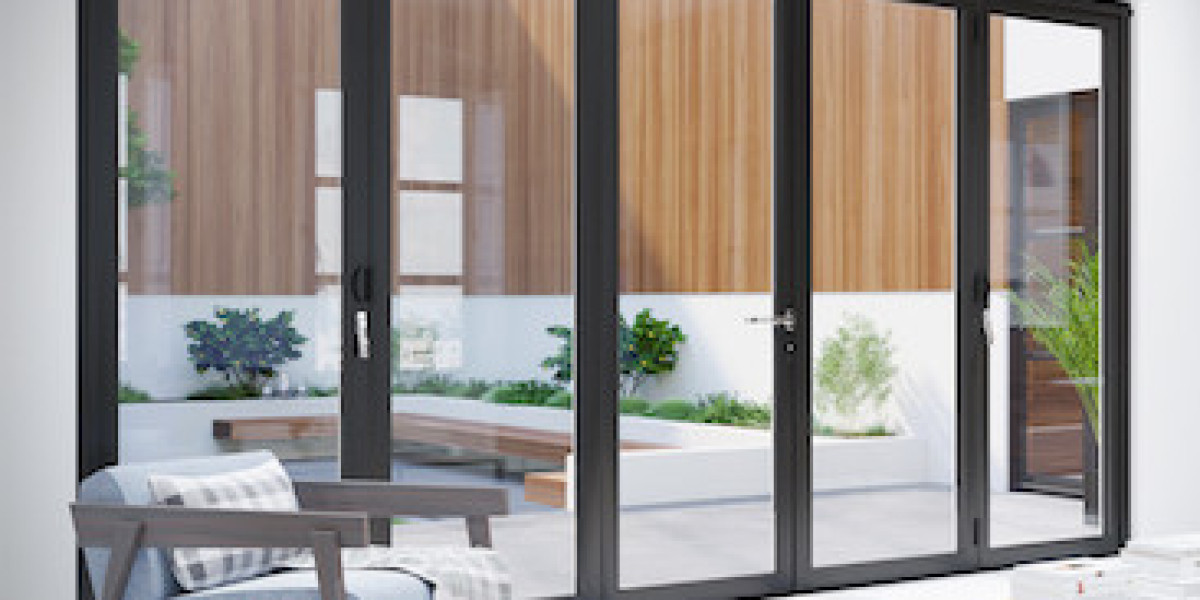Restoring Smooth Operation: A Comprehensive Guide to Repairing Your Bifold Door Top Pivot
Bifold doors, also referred to as folding doors, are a popular choice for maximizing area and developing a smooth shift in between rooms or in between indoor and outdoor living locations. Their distinct folding mechanism permits broader openings than standard hinged doors, making them perfect for closets, kitchens, utility room, and even as patio doors. However, the smooth and efficient operation of a bifold door depends upon a number of crucial parts, and one of the most important, yet typically ignored, is the leading pivot.

The top pivot is a small however vital system that sits at the leading corner of a bifold door panel, permitting it to rotate smoothly within the track system. Gradually, due to wear and tear, inappropriate positioning, and even unexpected damage, this pivot can stop working. A malfunctioning leading pivot can result in a host of aggravating problems, from sticking doors and loud operation to complete immobility. Thankfully, repairing or replacing a bifold door track replacement door top pivot is frequently a workable DIY job, saving you the expense of expert repairs and restoring the performance of your door.
This extensive guide will walk you through the process of understanding, detecting, and repairing a bifold door leading pivot. We will explore the elements included, identify common issues, equip you with the necessary tools and products, and provide a step-by-step repair process. Whether you are a skilled DIY lover or a house owner dealing with home repairs for the first time, this article will empower you to confidently resolve a faulty bifold door hardware repair door leading pivot and get your door operating smoothly when again.
Understanding the Top Pivot System
Before diving into the repair procedure, it's useful to comprehend the function of the leading pivot within the broader bifold door system. The leading pivot, in conjunction with the bottom pivot (typically described as a guide or wheel), works to control the motion and stability of each door panel.
Generally, a bifold door hardware repair door system consists of:
- Top Track: A metal track installed horizontally at the top of the door opening. This track houses the top pivots and guides the door panel's motion.
- Bottom Track or Guide: Some bifold door systems make use of a bottom track, while others utilize a bottom guide that is either a pin or a wheel, connecting with a groove or channel on the floor or door jamb. This bottom component assists stabilize the door panel and preserves positioning.
- Top Pivots: These are little, usually plastic or metal elements that are placed into the top edge of the door panel and ride within the leading track. They permit the door panel to pivot and slide efficiently along the track.
- Connecting Hinges: Hinges that connect the individual door panels together, enabling them to fold in a concertina style.
- Door Handles and Hardware: Hardware utilized for operating and protecting the bifold door.
The leading pivot bears a substantial load, facilitating the smooth moving and folding action of the door. It requires to be robust adequate to stand up to continuous use, yet exact adequate to enable uncomplicated movement. Understanding its function assists in valuing why its proper function is so vital to the total operation of the bifold door.
Identifying Common Top Pivot Problems
Acknowledging the symptoms of a failing leading pivot is the primary step towards a successful repair. Here are some common signs that suggest a problem with your bifold door track lubrication door's top pivot:
- Sticking or Jerky Door Movement: The door ends up being challenging to open or close efficiently, hesitating or capturing as it moves along the track. This is frequently the most visible symptom.
- Noisy Operation: You might hear grinding, squeaking, or clicking sounds as the door is operated, showing friction or damage within the pivot mechanism or track.
- Door Panel Drooping or Sagging: If the top pivot is used or broken, the door panel may droop slightly at the top, causing misalignment and more preventing smooth operation.
- Visible Damage to the Pivot: Upon assessment, you might be able to see cracks, chips, or breaks in the plastic or metal components of the top pivot itself.
- Door Jumping Out of the Track: In serious cases of pivot failure, the door panel might leap out of the top track altogether, ending up being entirely unusable and potentially harming the door or frame.
- Increased Effort to Operate: If you discover yourself having to apply more force than usual to open or close the door, it could be a sign of increased friction due to a failing pivot.
If you observe any of these symptoms, it is extremely likely that your Bifold Door Replacement Parts door's top pivot needs attention. Neglecting these concerns can cause more damage to the door, track, or surrounding frame, making the repair more intricate and expensive in the long run.
Tools and Materials You'll Need
Before you start the repair, gather the necessary tools and products to make sure a smooth and effective procedure. Having actually everything prepared ahead of time will save you time and frustration.
Tools:
- Screwdriver Set: A Phillips head and flathead screwdriver will be essential for eliminating and setting up screws associated with the pivot and door hardware. Ensure you have various sizes to fit different screws.
- Pliers: Pliers can be valuable for gripping and maneuvering small parts, specifically if the old pivot is stuck or challenging to remove.
- Hammer (Optional): A lightweight hammer may be required to gently tap the new pivot into location, if needed by the design.
- Determining Tape: To guarantee precise positioning and alignment when installing the brand-new pivot.
- Pencil or Marker: For marking positions and guaranteeing proper positioning.
- Security Glasses: Protecting your eyes is crucial when dealing with tools and hardware.
- Gloves (Optional): To safeguard your hands and supply much better grip.
Products:
- Replacement Top Pivot: This is the most important product. It's vital to purchase a replacement pivot that is compatible with your specific bifold door system. Take the old pivot with you to the hardware shop for comparison, or take down the door maker and design if possible. Top pivots been available in numerous sizes and styles.
- Lube (Silicone Spray or Dry Graphite): Lubricating the track and brand-new pivot will make sure smooth, peaceful operation and prolong the life of the pivot.
- Wood Filler or Wood Glue (Optional): If the screw holes holding the pivot in location are stripped or damaged, wood filler or glue may be required to reinforce them.
- New Screws (Optional): If the existing screws are damaged or removed, have a set of replacement screws of the appropriate size and type on hand.
Step-by-Step Guide to Repairing the Top Pivot
With your tools and products prepared, you can now continue with the repair. Follow these step-by-step directions thoroughly:
Step 1: Safety and Preparation
- Put on your shatterproof glass.
- Make sure the work location is clear and well-lit.
- Collect all your tools and materials and place them within easy reach.
Action 2: Inspect and Access the Top Pivot
- Carefully analyze the top pivot of the bothersome door panel to visually examine the damage. Look for fractures, breaks, or signs of wear.
- Identify how the pivot is connected to the door. A lot of are normally held in location by screws.
- You may require to slightly open or close the bifold door to gain better access to the top pivot.
Action 3: Remove the Old Top Pivot
- Utilizing the appropriate screwdriver (generally Phillips head), thoroughly eliminate the screws protecting the top pivot to the door panel.
- If the screws are removed or tough to remove, you might need to use pliers to grip the screw head and gently turn it. Avoid harming the surrounding door material.
- Once the screws are gotten rid of, gently pull out the old leading pivot. If it's stuck, utilize pliers to gently wiggle and pull it totally free.
Step 4: Prepare for the New Pivot (If Necessary)
- Inspect Screw Holes: Examine the screw holes in the door where the pivot was connected. If they are removed or enlarged, you may need to enhance them.
- For Minor Stripping: Apply a small amount of wood glue into the screw hole and let it partially dry for a couple of minutes. This will provide the screws a better grip.
- For Severely Stripped Holes: Use wood filler to fill the removed holes totally. Enable the filler to dry and harden according to the item instructions. As soon as dry, pre-drill pilot holes somewhat smaller sized than the brand-new screws to ensure a protected accessory.
Step 5: Install the New Top Pivot
- Position the brand-new top pivot in the very same orientation as the old one was gotten rid of.
- Align the screw holes of the new pivot with the holes in the door panel.
- Place the screws and tighten them firmly with the screwdriver. Avoid overtightening, which could remove the screw holes or damage the pivot. Ensure the pivot is strongly connected but not exceedingly tight.
Step 6: Lubricate the Track and Pivot
- Apply a percentage of silicone spray or dry graphite lubricant to the top track of the bifold door, concentrating on the location where the top pivot will run.
- Likewise, lightly lubricate the moving parts of the brand-new leading pivot itself. This will promote smooth operation and reduce friction.
Action 7: Test and Adjust
- Carefully operate the bifold door renovators door, opening and closing it numerous times.
- Look for smooth, quiet motion. If the door still sticks or binds, re-inspect the pivot for correct setup and positioning.
- Make sure the door panels fold and unfold properly which the door is not rubbing against the frame or track.
- If required, small changes to the pivot position or track positioning might be needed. Consult your bifold door manufacturer's guidelines for specific change treatments if offered.
Step 8: Clean Up
- Once you are pleased with the door's operation, tidy up your workspace and put away your tools.
Troubleshooting Common Issues
While fixing a leading pivot is often uncomplicated, you may experience some obstacles. Here are a few fixing tips:
- Pivot Doesn't Fit: If the brand-new pivot does not suit the track or door, double-check that you have the correct replacement type. Compare it closely to the old pivot and the door specifications.
- Screws Won't Tighten: Stripped screw holes are a typical concern. Refer back to Step 4 and use wood filler or glue to enhance the holes before trying to tighten the screws once again.
- Door Still Sticks After Pivot Replacement: If the door still does not operate smoothly after changing the pivot, the issue might lie somewhere else. Examine the bottom pivot/guide, the track for debris or damage, or the door panel hinges for stiffness.
- Door Panel Misalignment: If the door panels are not lined up properly after repair, guarantee the leading pivot is effectively seated in the track which the door panel is correctly placed within the frame. Examine for any warping or damage to the door panel itself.
Preserving Your Bifold Door Pivots
Preventative upkeep can substantially prolong the life-span of your bifold door pivots and lessen the requirement for regular repairs. Here are some valuable maintenance pointers:
- Regular Lubrication: Lubricate the top track and pivots with silicone spray or dry graphite every few months to decrease friction and wear.
- Keep Tracks Clean: Periodically tidy the top and bottom tracks to eliminate dust, dirt, and debris that can hinder smooth operation. Use a vacuum or a brush to clean up the tracks.
- Check Regularly: Inspect the top and bottom pivots regularly for signs of wear, damage, or looseness. Resolve any minor concerns immediately before they intensify.
- Avoid Slamming: Avoid knocking the bifold doors, as this can put unnecessary tension on the pivots and hardware, leading to early failure.
- Examine Alignment: Periodically inspect the alignment of the door panels to ensure they are folding and unfolding correctly which there is no undue tension on the pivots.
When to Call a Professional
While DIY repair is often possible, there are circumstances where seeking professional assistance is a good idea. Consider calling a door repair professional if:
- You are uncomfortable with DIY repairs.
- The damage to the door or frame is substantial beyond simply the pivot.
- You are unable to determine the proper replacement pivot.
- You experience persistent concerns after trying the repair.
- The bifold door is part of an intricate system, such as a multi-panel patio door, and requires specialized knowledge.
An expert door specialist has the experience and competence to precisely detect intricate bifold door problems and perform repairs efficiently and effectively.
Fixing a bifold door top pivot is a fulfilling DIY job that can bring back the smooth and simple and easy operation of your door. By comprehending the elements, recognizing the issue, and following the step-by-step guide detailed in this post, you can with confidence tackle this repair and conserve yourself money and time. Routine upkeep and prompt attention to minor concerns will make sure the durability and dependable performance of your bifold doors for several years to come, contributing to the comfort and performance of your living space.
Regularly Asked Questions (FAQs) about Bifold Door Top Pivot Repair
Q1: How do I understand what kind of top pivot to buy as a replacement?
A: The finest method is to eliminate the old pivot and take it with you to a hardware store. Compare it visually to the offered choices, paying attention to the size, shape, and accessory method. Additionally, if you know the manufacturer and model of your bifold door, you may be able to discover particular replacement parts online or through the manufacturer.
Q2: Can I repair a damaged leading pivot, or do I always require to replace it?
A: In the majority of cases, it's more practical and trusted to replace a damaged or used leading pivot rather than attempting to repair it. Pivots are reasonably affordable, and replacement makes sure proper function and longevity. Attempting to repair a damaged pivot might lead to further issues and is usually not advised.
Q3: My screws are stripped and won't hold the brand-new pivot. What can I do?
A: Stripped screw holes are typical. Attempt using a little longer or thicker screws. If that doesn't work, apply wood glue into the screw hole and let it partially dry before re-screwing. For seriously stripped holes, utilize wood filler to fill them entirely, let it dry, and after that pre-drill pilot holes for the brand-new screws.
Q4: Do I require to remove the entire bifold door to replace the top pivot?
A: Often, you can replace the leading pivot without completely eliminating the door panel. However, depending upon the design and ease of access, it might be easier to partially remove the door panel to acquire much better gain access to. In some cases, particularly with heavier doors or complicated systems, eliminating the door panel might be safer and more convenient.
Q5: After changing the leading pivot, my door is still hard to open. What else could be wrong?
A: If the problem persists after pivot replacement, check other potential problems:
- Bottom pivot/guide: Inspect for damage or particles.
- Track: Clean and lube the top and bottom tracks. Look for damage or blockages.
- Hinges: Ensure the door panel hinges are not stiff or binding. Lubricate them if needed.
- Door Alignment: Check if the door panels are properly lined up within the frame.
Q6: How typically should I lube my bifold door rotates?
A: Regular lubrication every 3-6 months is advised for optimal performance. More frequent lubrication may be required in dusty or high-use environments. Usage silicone spray or dry graphite lube to keep the pivots and track moving efficiently.








